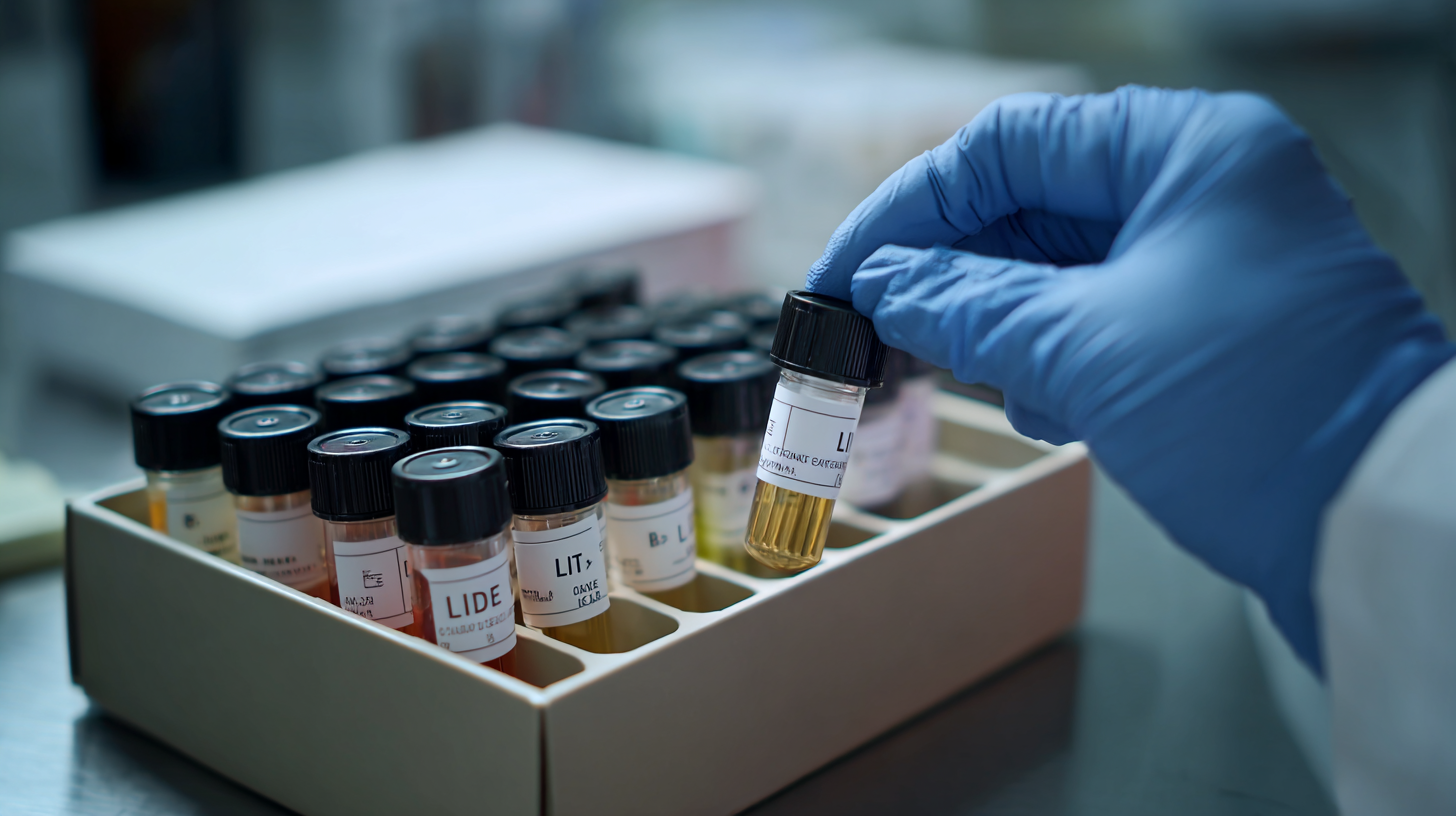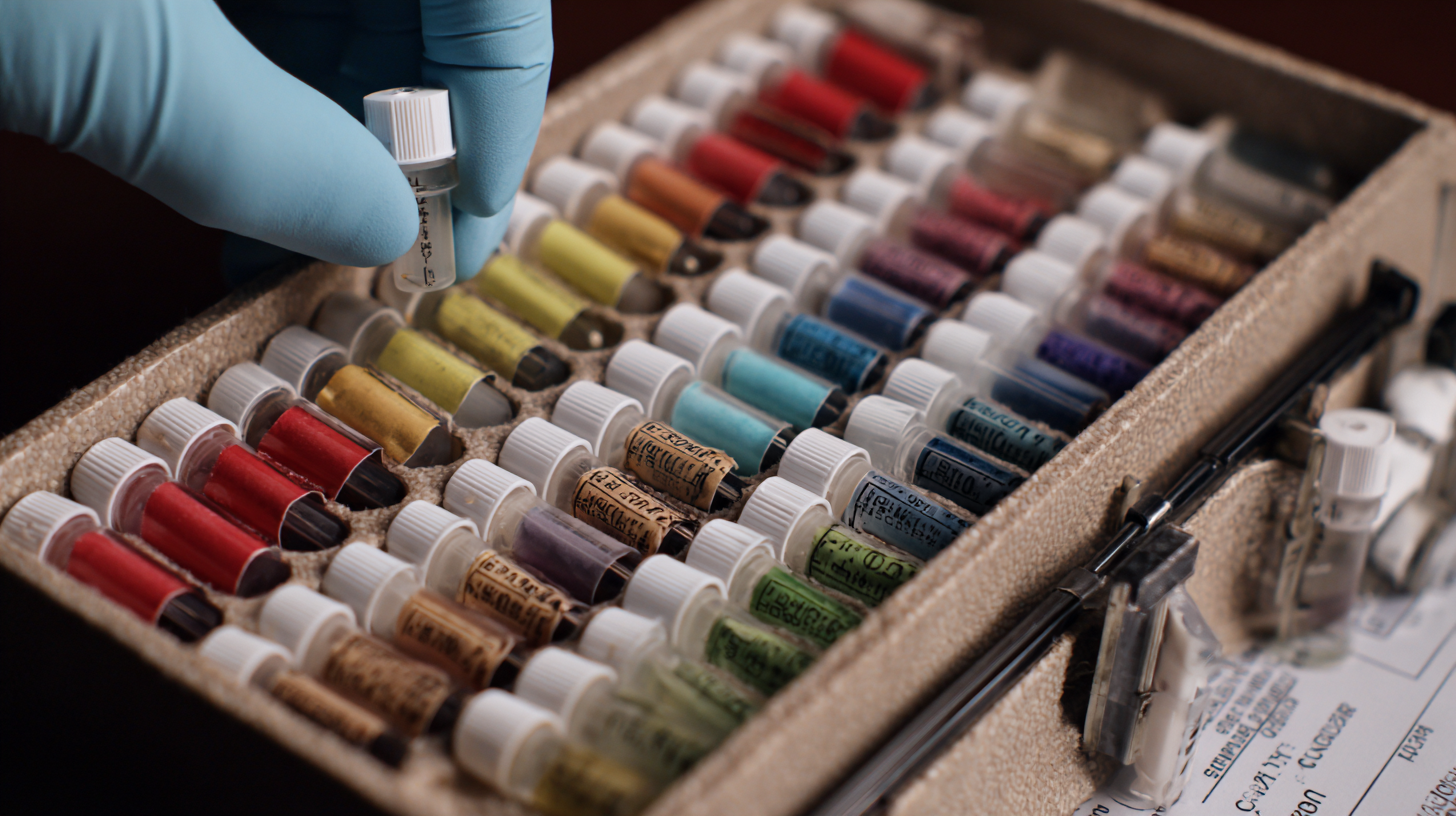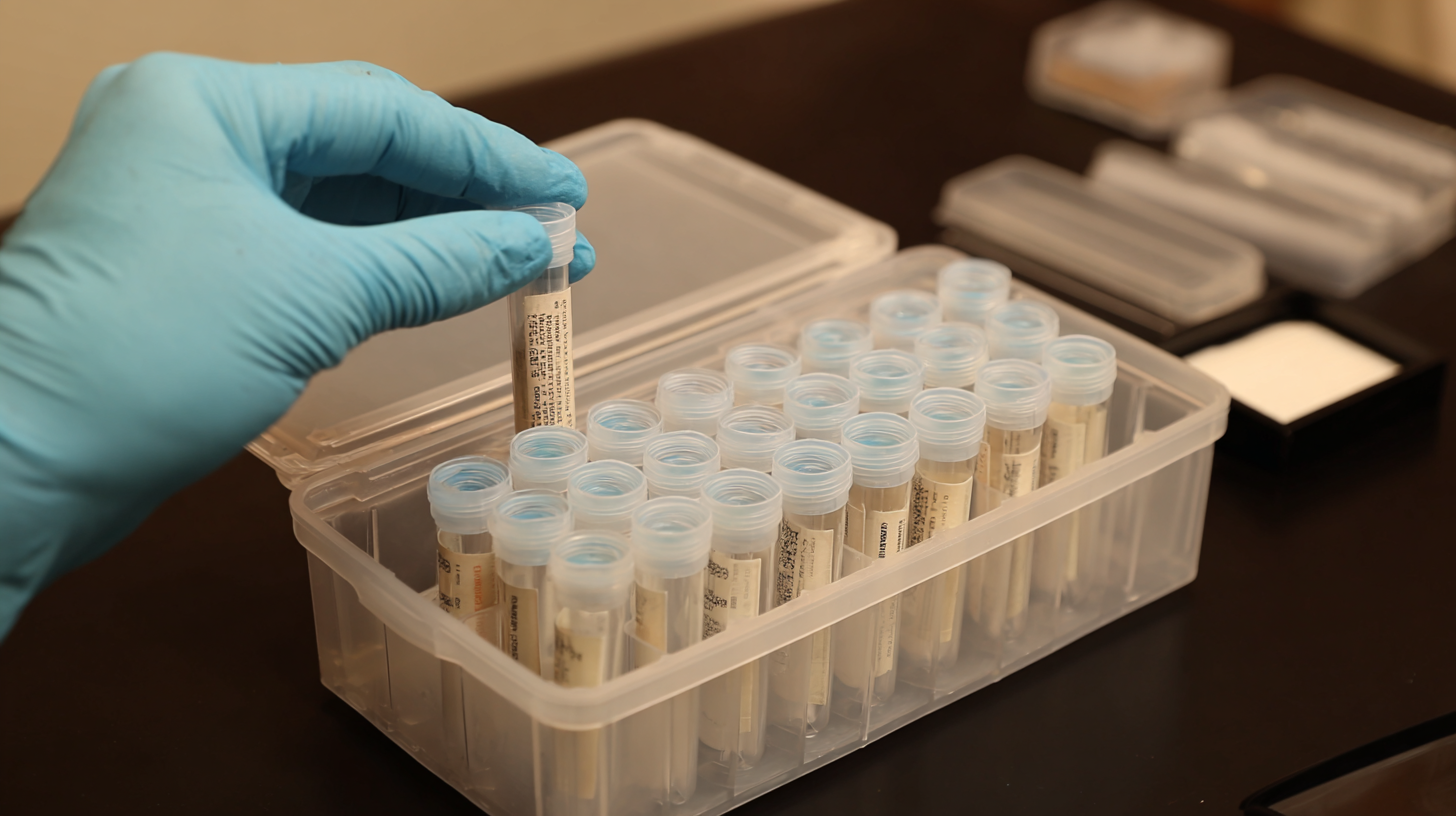 +86 178 5514 5298
+86 178 5514 5298
Leave Your Message
-
 CONTACT NUMBER
CONTACT NUMBER -
 CONTACT NUMBER
CONTACT NUMBER -
 CONTACT NUMBER
CONTACT NUMBER



In today's healthcare landscape, the importance of choosing the right specimen collection kit cannot be overstated, as it directly influences the accuracy of diagnostics and the efficiency of laboratory workflows. According to a recent industry report by Market Research Future, the global specimen collection market is projected to reach over $12 billion by 2025, driven by increasing demand for high-quality testing procedures. With the proliferation of diverse healthcare facilities and the necessity for compliant and reliable sample collection, it becomes crucial to assess the various kits available and their alignment with specific operational needs. Factors such as after-sales service advantages and repair costs are often overlooked but play a significant role in the long-term viability of these kits. As we delve into how to choose the best specimen collection kit for your facility, we will also explore the future of this essential component in healthcare, ensuring that your selection process is informed and strategic.

In healthcare, the quality of specimen collection kits is crucial for accurate diagnosis and effective treatment. High-quality kits not only ensure that samples are collected correctly but also minimize contamination risks, thereby improving the reliability of test results. Recent studies have highlighted the importance of standardized procedures and materials in specimen collection, reinforcing adherence to clinical guidelines which ultimately enhance patient care outcomes. For instance, a systematic review found that self-collected specimens for sexually transmitted infections yielded comparable accuracy to those collected by healthcare workers, underscoring the need for high-quality kits that empower patients while maintaining diagnostic integrity.

Moreover, as healthcare systems evolve, the role of comprehensive quality control mechanisms, including clinical audits and AI-based assessment models, becomes increasingly significant. These measures ensure that the procedures for specimen collection are not only followed but also optimized to align with the best practices in the field. As we explore innovative approaches, such as at-home sampling and advanced salivary analysis, the need for dependable collection kits remains paramount. By investing in superior specimen collection kits, healthcare facilities can directly influence the quality of care provided to patients, bridging gaps in diagnosis and paving the way for more effective treatment solutions.
When selecting a specimen collection kit for your facility, it is crucial to consider several key factors that can significantly influence the efficacy and reliability of your testing processes. First and foremost, assess the types of specimens you will be collecting, as different kits are designed for various sample types, including blood, saliva, urine, or other bodily fluids. Ensuring that the kit is specifically tailored to the specimen type will reduce the risk of contamination and enhance the accuracy of results.
Another vital factor is the ease of use of the collection kit. Look for kits that come with clear instructions and user-friendly components, allowing healthcare providers to efficiently collect and handle specimens. Additionally, consider the storage and transportation needs. The kit should maintain specimen integrity during transport, which often includes appropriate temperature controls and secure packaging.
By carefully evaluating these factors, you can choose a specimen collection kit that aligns with your facility's needs, ultimately improving diagnostic outcomes.
When selecting a specimen collection kit, evaluating manufacturer reliability is paramount. A manufacturer’s reputation often reflects their commitment to quality and compliance with industry standards. Look for companies that have a proven track record in the healthcare sector and are well-reviewed by other facilities. Certifications from relevant governing bodies, such as ISO standards or FDA approvals, can also signify that the manufacturer adheres to stringent quality control procedures, ensuring that the kits are not only safe but also effective for clinical use.
In addition to reliability, scrutinizing the product quality standards is essential. Each component of the collection kit should meet specific performance criteria to guarantee specimen integrity. This includes assessing the materials used, the sterility of the containers, and the overall design that facilitates accurate specimen collection and transport. Ensuring that the kits come with clear usage instructions and adhere to the latest healthcare guidelines will also enhance their efficacy in your facility. Prioritizing these elements will help you select a collection kit that meets your specific needs while ensuring the highest standards of patient care.
When selecting a specimen collection kit, customization options are crucial for ensuring that the kit meets the unique needs of your facility. According to a report by the National Institutes of Health, tailored kits can enhance workflow efficiency by up to 30%, reducing the time spent on specimen handling and processing. Facilities should assess their specific requirements—such as the types of specimens being collected, storage conditions, and necessary documentation—to determine which customization options are most beneficial.
Customization can also contribute to improved patient outcomes. A recent study published in the Journal of Clinical Microbiology indicated that using specialized kits for certain types of specimens can decrease contamination rates by 25%, leading to more accurate test results. By offering customized solutions, manufacturers can provide kits that not only meet regulatory standards but also align with the operational needs of healthcare providers, ultimately ensuring safer and more efficient specimen collection processes.

Investing in quality specimen collection kits may come with a higher upfront cost, but the long-term benefits far outweigh these initial expenses. High-quality kits not only improve the reliability of sample collection, but they also enhance the overall efficiency of your facility. With superior materials and design, these kits can reduce the likelihood of contamination and sample loss, ensuring that your laboratory receives accurate and actionable results.
When selecting a specimen collection kit, consider the following tips. First, evaluate the specific needs of your facility, including the types of specimens you will be collecting and the volume of samples. Next, assess the durability and ease of use of the kit, as user-friendly designs can streamline processes and minimize errors during collection. Lastly, don’t underestimate the importance of vendor support; partnering with suppliers that offer excellent customer service and training can significantly enhance your experience and efficiency in the long run. By prioritizing quality, you can ultimately save costs associated with retesting and remedial actions.
| Kit Type | Cost per Kit ($) | Number of Specimens | Turnaround Time (days) | Quality Rating (1-5) | Long-Term Benefits |
|---|---|---|---|---|---|
| Standard Collection Kit | 50 | 100 | 3 | 4 | Reliable performance with minimal errors |
| Advanced Biohazard Kit | 120 | 50 | 2 | 5 | Enhanced safety and compliance with regulations |
| Pediatric Collection Kit | 80 | 75 | 4 | 5 | Child-friendly design for ease of use |
| Environmental Collection Kit | 100 | 200 | 5 | 4 | Support for sustainable practices |
| COVID-19 Sample Kit | 150 | 30 | 1 | 5 | Quick response and high accuracy in testing |
